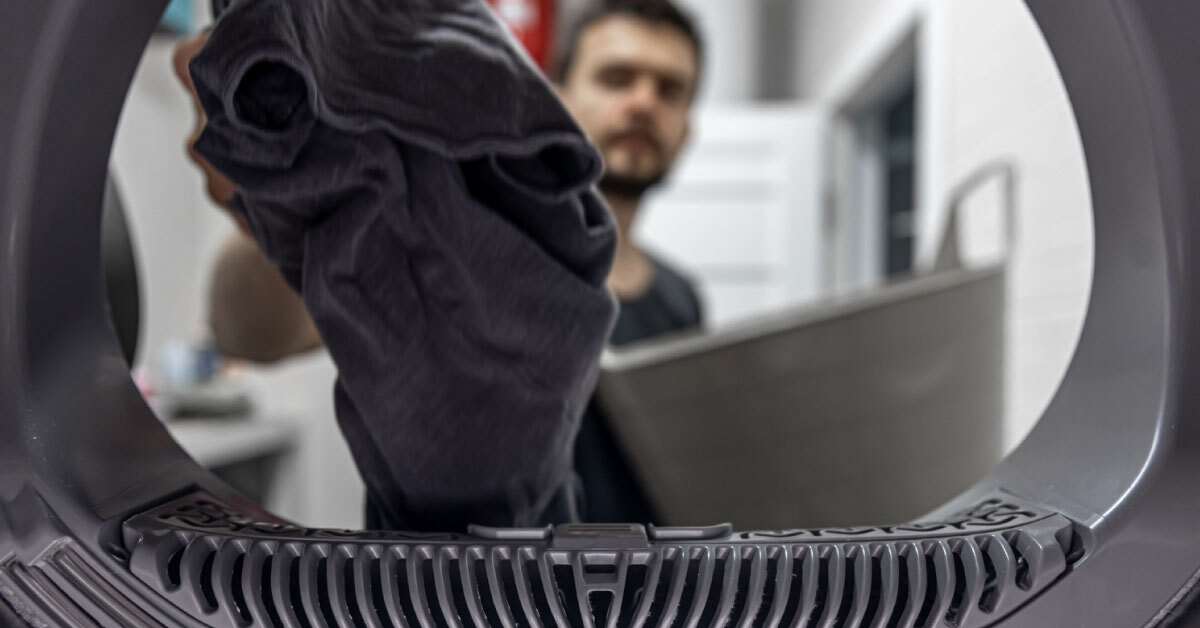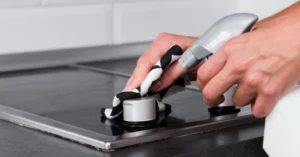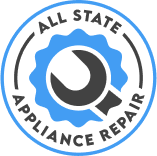Dryer vent cleaning might not be the most glamorous household chore, but it’s one of the most critical for keeping your home safe and your dryer running smoothly. Clogged dryer vents are the leading cause of residential dryer fires, according to the National Fire Protection Association, and they can also reduce your dryer’s efficiency, leading to higher energy bills and longer drying times. This comprehensive guide will walk you through how to clean your dryer vent, why it’s essential, and when to call in the pros. Whether you’re a DIY enthusiast or just want to understand the process, we’ve got you covered with practical tips, safety advice, and answers to common questions.
Why Cleaning Your Dryer Vent Matters
A clean dryer vent isn’t just about convenience—it’s about safety and efficiency. Lint, dust, and debris accumulate in the vent over time, creating a fire hazard and forcing your dryer to work harder. Here’s why regular cleaning is non-negotiable:
- Fire Prevention: The U.S. Fire Administration reports that dirty dryer vents cause thousands of house fires annually. Lint is highly flammable, and a clogged vent can trap heat, igniting it.
- Energy Savings: A clogged vent restricts airflow, making your dryer less efficient. This increases energy consumption and utility bills.
- Extended Appliance Life: When your dryer works harder to push air through a blocked vent, it wears out faster. Regular cleaning can prolong its lifespan.
- Improved Drying Performance: Clean vents mean faster drying times and fully dry clothes at the end of each cycle.
By dedicating a little time to maintenance, you can avoid costly repairs, reduce risks, and keep your laundry routine hassle-free.
Safety Measures
Prioritizing safety during dryer vent cleaning protects you and your home from potential hazards.
- Unplug the Dryer: Always disconnect the dryer from the power source to eliminate the risk of electric shock before starting any cleaning tasks.
- Turn Off Gas Supply for Gas Dryers: For gas dryers, shut off the gas valve to prevent leaks or exposure to harmful gases, and consult a professional if unsure.
- Wear Protective Gear: Use gloves and a dust mask to avoid inhaling lint or dust particles, which can irritate the respiratory system.
- Ensure Proper Ventilation: Work in a well-ventilated area to minimize dust accumulation and maintain good air quality during cleaning.
- Use Stable Equipment: If accessing exterior vents on roofs or high areas, use a sturdy ladder and have someone assist you to prevent falls.
- Seek Professional Support: For complex or hard-to-reach vents, contact our dryer vent cleaning service to ensure safe and thorough maintenance by certified technicians.
Tools You’ll Need to Clean Your Dryer Vent
Before diving in, gather the right tools to make the job easier and safer. Here’s what you’ll need:
- Dryer vent cleaning kit (includes flexible rods and a brush)
- Screwdriver (to remove vent covers or clamps)
- Vacuum cleaner with a hose attachment
- Leaf blower (optional, for exterior cleaning)
- Microfiber cloth or old towel
- Gloves and a dust mask (to protect against lint and dust)
- Flashlight (to inspect hard-to-see areas)
Step-by-Step Guide to Cleaning Your Dryer Vent
Follow these seven steps to clean your dryer vent safely and effectively. Always prioritize safety by unplugging your dryer (or turning off the gas supply for gas dryers) before starting.
Step 1: Unplug the Dryer and Move It
- Disconnect the dryer from the power source to avoid electrical hazards.
- For gas dryers, turn off the gas supply and consult a professional if you’re unsure.
- Carefully pull the dryer away from the wall to access the vent. Use caution to avoid damaging the floor or vent hose.
Step 2: Clean the Lint Trap and Housing
- Remove the lint trap and scrape off any lint with your fingers or a brush.
- Vacuum the lint trap housing using a hose attachment to remove hidden debris.
- Wash the lint trap with warm, soapy water if it’s coated with fabric softener residue, then dry it thoroughly before replacing it.
Step 3: Disconnect the Vent Hose
- Use a screwdriver to loosen the clamp securing the vent hose to the dryer.
- Detach the hose and inspect it for lint buildup.
- Vacuum inside the hose and the dryer’s exhaust port to clear loose debris.
Step 4: Clean the Interior Vent Duct
- Attach the brush from your dryer vent cleaning kit to the flexible rods.
- Insert the brush into the vent duct and rotate it gently to dislodge lint.
- Use a drill for powered brushing if your kit supports it, but be careful not to damage the duct.
- Vacuum up the loosened debris as you go.
Step 5: Clean the Exterior Vent
- Locate the exterior vent (usually on an outside wall or roof).
- Remove the vent cover with a screwdriver and check for blockages like bird nests or leaves.
- Use the cleaning brush or a leaf blower to push lint out from the exterior side. Wrap the blower’s end in a microfiber cloth to create a seal if needed.
- Vacuum or sweep away debris around the vent.
Step 6: Reassemble and Test
- Reattach the vent hose to the dryer and secure it with the clamp.
- Replace the exterior vent cover and ensure it’s tightly fastened.
- Plug the dryer back in (or turn on the gas supply) and push it back into place.
- Run the dryer on an air-only cycle for 5–10 minutes to blow out any remaining lint.
Step 7: Inspect and Maintain
- Check for signs of lint buildup in the vent hose or exterior flap.
- Schedule regular cleanings (once or twice a year, depending on usage) to prevent future clogs.
- Monitor your dryer for warning signs like longer drying times or a burning smell, which indicate it’s time to clean again.
Benefits of Regular Vent Cleaning
Keeping your dryer vent clean offers more than just peace of mind. Here are the key benefits:
- Enhanced Safety: Regular cleaning drastically reduces the risk of dryer fires caused by lint buildup.
- Lower Energy Costs: A clean vent allows your dryer to operate efficiently, cutting down on energy usage.
- Faster Drying Times: Clean vents ensure proper airflow, so your clothes dry quicker.
- Longer Dryer Lifespan: Less strain on your dryer means fewer repairs and a longer-lasting appliance.
- Improved Air Quality: Clean vents prevent lint and dust from circulating in your home, especially if you use an indoor vent kit.
For professional dryer vent cleaning services, check out our dryer vent cleaning page to schedule an appointment and keep your home safe.
When to Call a Professional
While DIY cleaning is effective for many homeowners, some situations call for professional expertise. Consider hiring a pro if:
- Your Vent Is Hard to Access: Vents on roofs or in multi-story homes can be dangerous to reach. Professionals have the tools and experience to handle complex setups.
- You Have a Gas Dryer: Gas dryers pose additional risks like carbon monoxide leaks if mishandled. A certified technician ensures safety.
- The Vent Is Severely Clogged: If lint is compacted or the vent hasn’t been cleaned in years, pros use specialized equipment like high-powered vacuums and agitation devices.
- You Notice Persistent Issues: A burning smell, excessive heat, or clothes that won’t dry could indicate a deeper problem requiring professional diagnosis.
- You Want Regular Maintenance: Professionals like Stanley Steemer follow NADCA guidelines for thorough cleaning, offering peace of mind for busy households.
For expert help, visit our dryer vent cleaning service page to connect with trusted technicians in your area.
Common Mistakes to Avoid
To ensure a safe and effective cleaning, steer clear of these pitfalls:
- Using a Regular Vacuum: Household vacuums lack the power to remove compacted lint and may spread dust.
- Ignoring the Exterior Vent: Cleaning only the interior leaves debris in the outdoor vent, reducing efficiency.
- Skipping Safety Precautions: Always unplug the dryer and wear protective gear to avoid injury or dust inhalation.
- Overlooking Regular Maintenance: Waiting for signs of a clog is risky. Clean your vent at least once a year.
FAQs About Dryer Vent Cleaning
1. Can I clean my dryer vent myself?
Yes, most homeowners can clean their dryer vent with a vent cleaning kit and basic tools. However, hire a professional for gas dryers or hard-to-reach vents to ensure safety.
2. How often do dryer vents need to be cleaned?
Clean your dryer vent once or twice a year, depending on usage. Heavy users (large households or frequent laundry) may need biannual cleanings.
3. Is it better to clean dryer vents from inside or outside?
Cleaning from both sides is ideal. Start inside to loosen lint, then clean the exterior vent to ensure all debris is removed.
4. How do you clear a clogged dryer vent?
Use a vent cleaning brush and flexible rods to dislodge lint, vacuum the debris, and check the exterior vent for blockages. A leaf blower can help for stubborn clogs.
5. What do pros use to clean dryer vents?
Professionals use high-powered HEPA-filtered vacuums, agitation devices, and specialized brushes to thoroughly clean vents and ensure safety.
6. Why does my dryer have no heat?
A clogged vent can restrict airflow, causing the dryer to overheat and shut off the heating element. Clean the vent and check for other issues like a faulty thermostat.
7. How can I make my dryer vent smell better?
Clean the vent to remove lint and debris, which can trap odors. Run an air-only cycle with a dryer sheet or use a vent deodorizer for a fresh scent.
Final Thoughts
Cleaning your dryer vent is a small task with big rewards: a safer home, lower energy bills, and a more efficient dryer. By following our step-by-step guide and scheduling regular maintenance, you can prevent fires, extend your dryer’s life, and keep your laundry routine running smoothly. For complex setups or peace of mind, don’t hesitate to call a professional—your safety is worth it.
Ready to take the next step? Visit our dryer vent cleaning services to book a professional cleaning or explore more home maintenance tips on our blog. Stay safe and keep your dryer in top shape!






